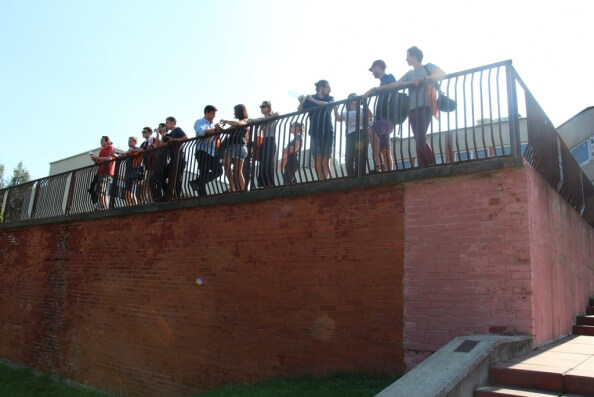Taking place in Visaginas from August 14th to 27th, the school will be composed of a mix of lectures, seminars, excursions, and supervised fieldwork during which the participants will be guided in the process of how to research the social and spatial relations of contemporary Central and Eastern Europe. The product of the students’ work at the school will be to create an exploratory mapping project of a selected dimension of Visaginas and to contribute to the collective development of a scenario for the town’s future. Agenda of the Summer School is available online.
Visaginas can be taken as a showcase of the risks involved in the transition from a town reliant on an external top-down allocation of resources and work force to a town compelled to survive in a competitive environment with a multilateral and multi-scalar distribution of resources and workplaces. The urban structure and services of Visaginas were planned and built from scratch in the context of the short-term economic abundance related to the project of the adjacent Ignalina nuclear power plant. For this reason, Visaginas was considered to be one of Soviet Lithuania’s best examples of a centrally planned, mono-functional urban unit, highly successful in terms of architectural decisions, quality of living, and human capital.
Since the 1990s, due to the gradual shutting down of the Ignalina nuclear power plant as a consequence of both the Chernobyl disaster in 1986 and Lithuania’s accession to the European Union, the town has stopped growing, with concomitant social phenomena of swelling unemployment, dwellers’ anxiety about the future, and a population decline of around 20 percent.
This situation is made even more troublesome by the combination of the town’s ethnic and professional composition. Because of the rapid Soviet-mode of urbanization, Visaginas’ population historically consisted principally of nuclear scientists, engineers, construction workers, and their family members brought from the Soviet Union. What was then perceived as a Soviet elite today primarily contributes to the image of Visaginas as a problematic town.
For inhabitants of the town, meanwhile, the prestige of the former nuclear power plant and the fact that the town’s inhabitants collectively constructed its housing blocks in the 1970s facilitated local belonging and an identification with place. However, it is not clear what role the engineers’ habitus and collective identification with place can play in the new context of the present. From this perspective, Visaginas today can be treated as a perfect case for defining and developing sources of urbanity in shrinking cities under post-socialist conditions as well as beyond.
Students will be guided by an international team of lecturers. The Summer School is intended for students of architecture, urban planning, cultural studies, European studies, history, urban studies, communication, design, sociology, anthropology, geography, and communication design. English and Russian are the common working languages. Some knowledge of Lithuanian, Belarusian, or Polish will be helpful.
A 5 ECTS certificate will be provided after handing in a final paper. The summer school’s fee is EUR 850 for international participants and EUR 60 for local participants. The German Academic Exchange Service (DAAD) is offering five GoEast scholarships for German participants. Costs of study materials, hostel accommodation, joint lunches and dinners in Visaginas, and a weekend excursion to Vilnius are covered.
Previous activities of the Summer School are documented in the book, published in fall 2016. Deadline for the applications is May 31. Detailed information and requirements for participants can be found here.
Applications, including CV, letter of intent, and recommendation, must be submitted by May 31stto urbanism@ehu.lt.
